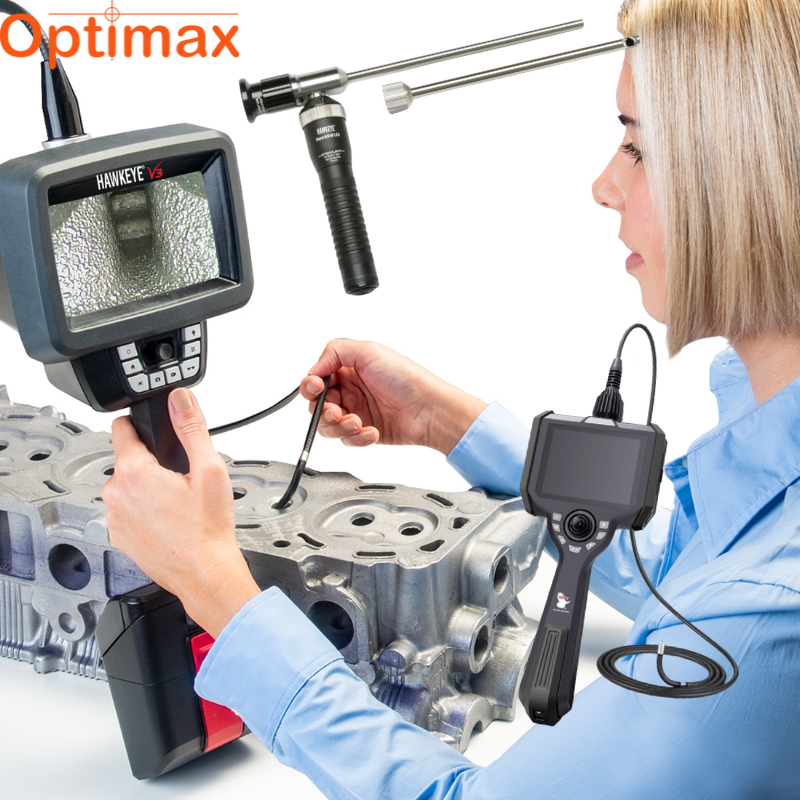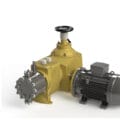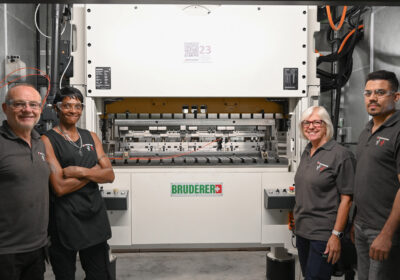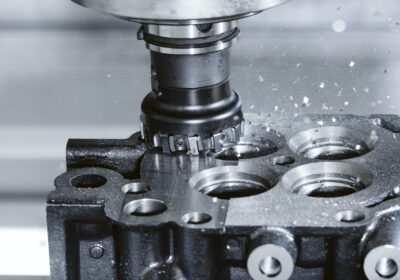Borescopes are essential tools for inspecting hard-to-reach areas, providing visual access to internal spaces without the need for disassembly. The three main types of borescopes—rigid, fibreoptic, and video borescopes—each have distinct features that make them suitable for different applications. Understanding when to use each type is crucial for achieving optimal inspection results.
Rigid Borescopes
Best Use Cases:
- Straight Line Access: Rigid borescopes are ideal when the inspection path is linear and unobstructed. Their straight, non-flexible nature means they can only be used where there is a direct line of sight to the inspection area.
- High Image Quality: Rigid borescopes generally provide superior optical quality compared to flexible models. They produce clear, high-resolution images, making them perfect for detailed inspections where image clarity is critical.
- Durability: Constructed with robust materials, rigid borescopes are well-suited for industrial environments where they might encounter rough handling or harsh conditions.
- Cost Efficiency: Often less expensive than fibreoptic or video borescopes, rigid borescopes are a cost-effective choice for frequent inspections where flexibility is not required.
Common Applications:
- Inspection of engines and turbines in the automotive and aerospace industries.
- Examination of pipes and tubes in plumbing and industrial settings.
- Quality control inspections in manufacturing, where precision and clarity are paramount.
Fibreoptic Borescopes
Best Use Cases:
- Flexible Navigation: Fibreoptic borescopes excel in situations where the inspection path is not straight. Their flexible nature allows them to navigate bends and curves, reaching areas that rigid borescopes cannot.
- Small Diameter Access: These borescopes can have very small diameters, making them suitable for inspecting tight or intricate spaces.
- Remote Viewing: Fibreoptic borescopes can be used for remote inspections where the area of interest is far from the access point thanks to their long, flexible cables.
- Varied Light Conditions: Equipped with built-in light sources, fibreoptic borescopes can illuminate dark inspection areas, ensuring visibility in low-light conditions.
Common Applications:
- Inspection of complex machinery with winding internal components.
- Plumbing and HVAC system inspections, particularly in convoluted piping.
- Medical applications such as endoscopy, where flexibility and small diameter are critical.
- Aircraft maintenance, especially for examining internal parts of engines.

Video Borescopes
Best Use Cases:
- Advanced Imaging and Documentation: Video borescopes are equipped with miniature cameras that transmit live video feeds to a display. This allows for real-time inspection and recording of images and videos for documentation and later analysis.
- Enhanced Manoeuvrability: Many video borescopes feature articulation at the tip, allowing precise control over the camera’s direction, which is invaluable in complex inspections.
- User-Friendly Operation: With digital displays and often intuitive controls, video borescopes are user-friendly, reducing the learning curve and enhancing inspection efficiency.
- Data Storage and Sharing: The ability to capture and store images and videos digitally facilitates easier reporting, sharing, and archiving of inspection results.
Common Applications:
- Inspection in the automotive and aerospace industries, where detailed documentation and precise navigation are required.
- Industrial inspections in sectors such as power generation and manufacturing, where comprehensive data recording is beneficial.
- Building and infrastructure inspections, providing detailed visual records for maintenance and repair purposes.
- Medical diagnostics and procedures, offering clear, real-time visual feedback.
Conclusion
Selecting the right borescope depends on the specific requirements of the inspection task. Rigid borescopes are optimal for high-resolution, straight-line inspections in durable environments. Fibreoptic borescopes provide flexibility and access to narrow, winding spaces, making them ideal for intricate inspections. Video borescopes offer advanced imaging capabilities, articulation, and digital documentation, suitable for complex and highly detailed inspections. By understanding the unique advantages of each type of borescope, professionals can choose the most appropriate tool to ensure thorough and efficient inspections.
All these types of borescopes are manufactured by Gradient Lens Corporation and are available in the UK, Ireland and Europe from Optimax Imaging and Inspection. www.optimaxonline.com






